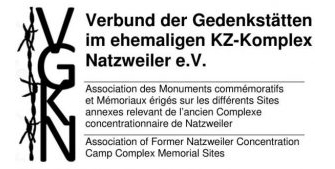At least 55 subcamps of the Natzweiler concentration camp were established between 1942 and 1945, almost all of them at sites of the SS and the war and armaments industry of the Third Reich. There, concentration camp prisoners had to perform forced labour under inhuman conditions, often to the point of death. After the dissolution of the main camp and the subcamps on the left bank of the Rhine in September 1944, “KL Natzweiler” continued to exist under its old name in its subcamps on theon the right side of the Rhine river until the end of the war; in the final phase of the war, the worsening of the situation and the evacuation and death marches claimed a further large number of victims.
Increasingly since the 1980s of the 20th century, citizens at some of the former subcamps and associated production sites have been campaigning for the establishment of memorials. Each of these has its own individual history. The historically developed uniqueness and independence of the memorial sites must be preserved as a valuable asset.
Nevertheless, the memorials in the network of the former Natzweiler concentration camp complex have much in common.
On the historical level, all memorial sites deal with a multinational prisoner society – with the result that local remembrance work has been given a European, cross-border dimension from the very beginning. The memorial sites maintain relations with survivors and their families, their organisations and other institutions in Europe and beyond; the work is carried out in a spirit of reconciliation and international understanding.
All memorial sites see themselves as historical-political learning places for young people and adults and have developed a differentiated educational offer. They are in contact with schools and other educational institutions and welcome groups of all kinds. They address the public with commemorative ceremonies, a wide range of information events and opportunities to participate.
With their educational work, all memorial sites stand up for human rights, the rule of law and democracy, against racism, anti-Semitism, anti-Gypsyism and other forms of group-focused misanthropy.
The concentration camp memorials have become increasingly aware that they are working on a common history. This is historically linked to the constant shift of victims and perpetrators within the overall “Natzweiler” complex. As a result, the site of the former main camp in France and the Centre européen du résistant déporté (CERD), which is located there, are also coming increasingly into focus. For many years now, there has therefore been good cooperation between the memorial sites, also increasingly with the CERD.
By establishing a network, the cooperation between the memorials is to be better organised and more effective.
